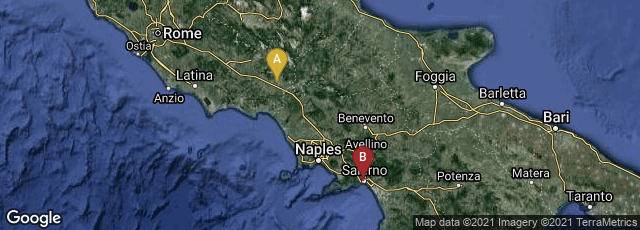

A: Lazio, Italy, B: Salerno, Campania, Italy
Though the date of its foundation remains uncertain, the Schola Medica Salernitana in the coastal south Italian city of Salerno, was the first western medical school, representative of both the Greek and Arabic medical traditions. It may have been founded in the early tenth century. Texts representative of both the Greek and Arabic traditions had accumulated in the ancient library of the Abbey of Monte Cassino. Especially as these were translated into Latin, beginning in the 11th century, by physicians and scholars associated with the medical school, the received lore of Hippocrates, Galen and Dioscorides was supplemented and invigorated by Arabic medical practice, known from contacts with Sicily and North Africa. As a result, the medical practitioners of Salerno, both men and women, were unrivalled in the medieval Western Mediterranean.
The school, which found its original base in the dispensary of a monastery founded in the 9th century, reached its greatest fame between the tenth and thirteenth centuries, from the last decades of Lombard power, during which its fame began to spread more than locally, to the fall of the Hohenstaufen. The arrival in Salerno of Constantinus Africanus (Constantine the African) in 1077, marked the beginning of Salerno's classic period. In the 11th century, through the encouragement of Alfano I, Archbishop of Salerno, who was a translator from the Arabic and a medical doctor himself, and the translations of Constantinus Africanus, Salerno gained the title of "Town of Hippocrates" (Hippocratica civitas or Hippocratica urbs). People from all over the world flocked to the "Schola Salerni", both the sick, in the hope of recovering, and students, to learn the art of medicine.